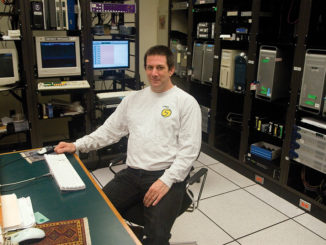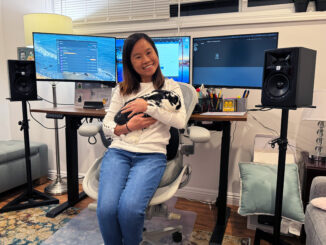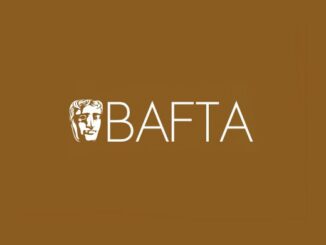
by Garrett Gilchrist
An unexpected landing on a distant planet spells danger for the Robinson family. If that sounds vaguely like a flashback to baby boomers who watched primetime TV back in the Sixties, it is. Well, sort of… Created by Matt Sazama and Burk Sharpless, this reboot/update of the Irwin Allen series Lost in Space — which originally aired 1965-1968 on the CBS television network — debuted on Netflix, with ten episodes that began streaming April 13.
John Robinson (Toby Stephens of Black Sails), a US Marine, has been away too long, and wife Maureen Robinson (Molly Parker of House of Cards and Deadwood) has moved on. But surviving the perils of an alien world brings the family back together, and provides harsh life lessons for their overachieving children, Judy, Penny and Will (Taylor Russell, Mina Sundwall and Maxwell Jenkins, respectively). The Robinsons are joined by the treacherous Dr. Smith (Parker Posey) and the charismatic Don West (Ignacio Serricchio).
Supplying the soundscape to this sci-fi setting was supervising sound editors Benjamin L. Cook, MPSE, and Branden Spencer. Cook had previously created audio environments for Deadwood (2004-2006), Rome (2005-2007), The Pacific (2010), Black Sails (2014-2017) and Outcast (2016-2017). His film credits include Apocalypto (2006) and Secretariat (2010). CineMontage spoke to Cook about his career in sound editing and design, as well as his work with Spencer on the new Lost in Space, before it dropped.
* * *
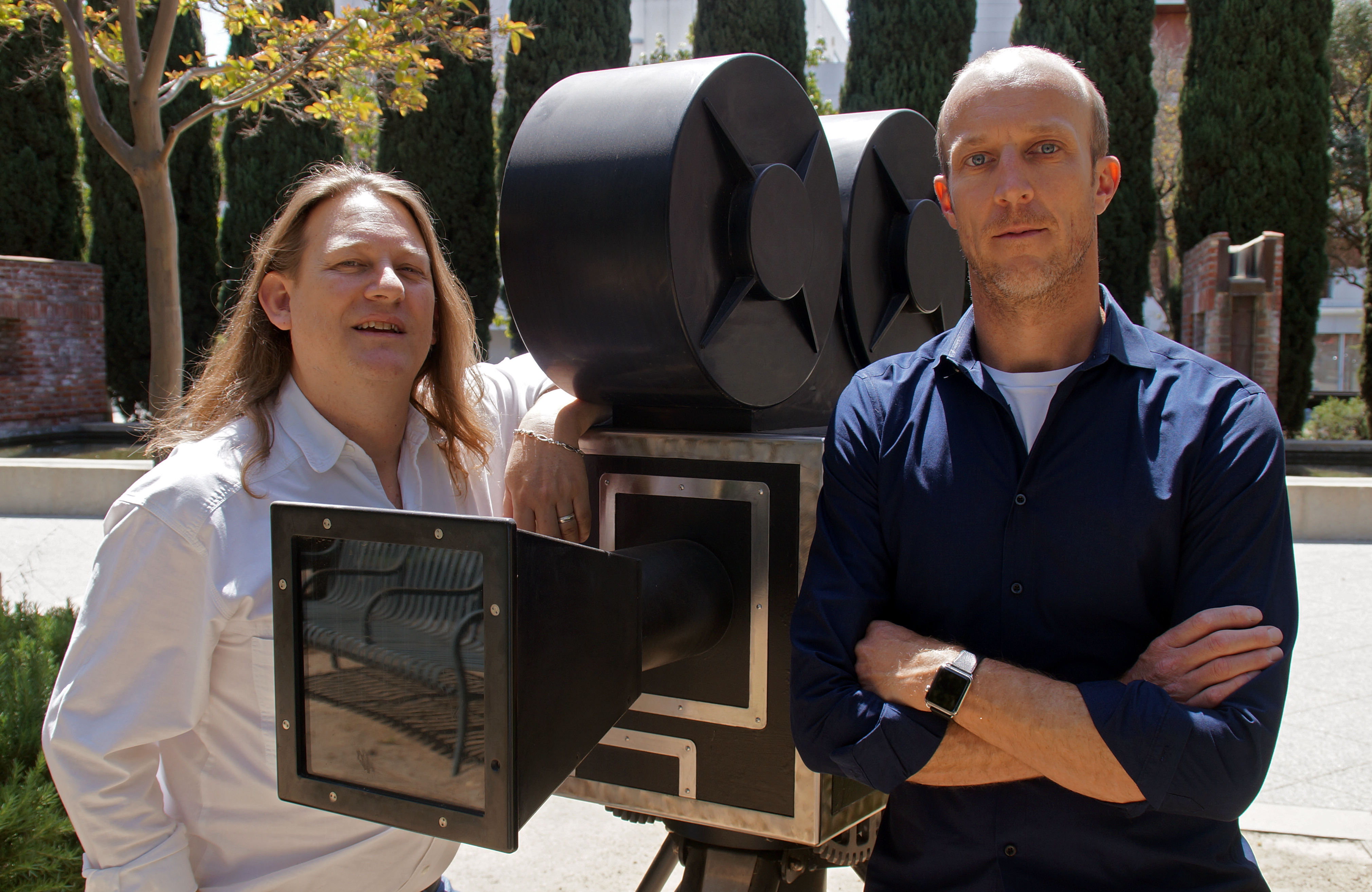
CineMontage: Tell me how you got started in the business.
Benjamin Cook: I started out as a musician, pursuing a career in Los Angeles. I put out records, was playing clubs and touring. My then-girlfriend worked at a recording studio, and the owner had been a live sound mixer. We hit it off, and I was introduced to post-production by taking a part time job at night. I started transferring quarter-inch production sound rolls, and from there started doing backgrounds, Foley editing and sound effects — learning the craft. My first job cutting sound effects was on Hercules: The Legendary Journeys [1995] and its spin-off, Xena: Warrior Princess [1995]. Twenty years later, I’ve been very fortunate to work on great projects in television and film.
CM: Did your background as a musician help you when you started out?
BC: Certainly my interest in sampling, and midi keyboards and drum machines, served me well. I was already using time code to synchronize tape to midi devices, and midi sequencing software on a computer. My home demo studio allowed for only a few physical tracks, but I could expand that with virtual tracks. So it wasn’t a huge leap to synchronize a DAW to a three-quarter-inch deck.
CM: One of your first credits in 1997 is David Lynch’s Lost Highway, a music-oriented film with a dark and heavy sound to it.
BC: David’s a super unique individual and he approaches [filmmaking] very much like a painter, as a piece of art. He works differently than anybody else. Traditionally in a film, you’ll make some passes, play it back and then get a lot of notes, and do a lot of fixes. Many times, David wouldn’t do that. He’d want what we’d captured in that moment, and wouldn’t touch it after that. You’d think that we’d need to add something here, take something away. But no, it’s done. It’s unusual but very freeing.
CM: You also worked on 2017’s Spider-Man Homecoming.
BC: It’s a great experience to work on a big set piece like that. I’m a huge Spider-Man fan so I was glad to be asked to be part of it. It’s a good movie; Marvel has some really great films. A lot of people kind of brush it off, but they’ve done great work over ten-plus years.
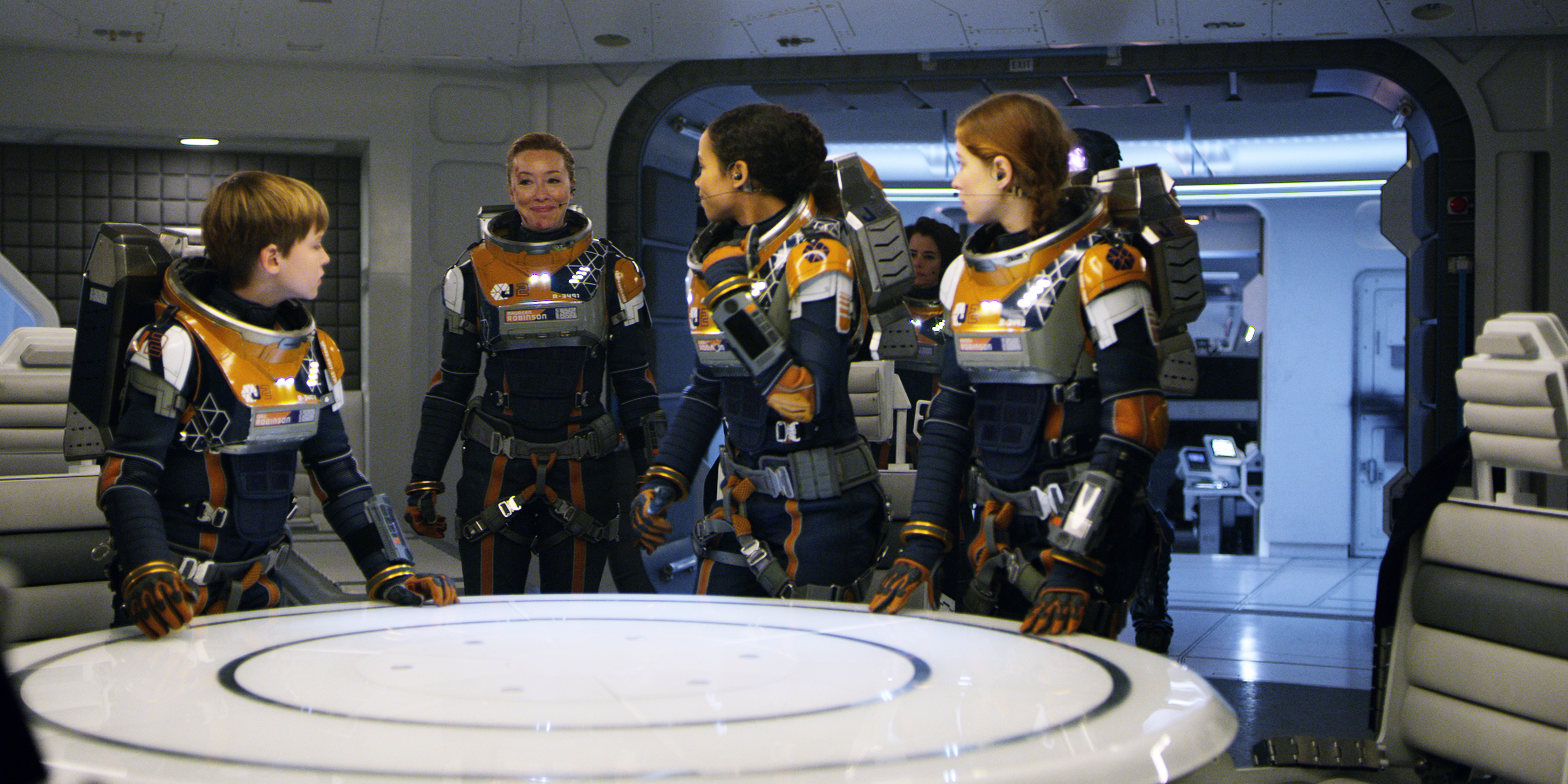
CM: What’s your thought process when beginning work on a television show?
BC: Some of my favorite shows were Black Sails and Deadwood. These are period pieces with rich textures, and the locations and background set the tone for the whole thing. The first thing I do is read as many scripts as I can get my hands on. Then I’ll do research, if it’s a historical piece like Rome, trying to find out materials that were used — what the artisans used to make the sandals, the wildlife, the flora and fauna of those areas — to rein in the sounds to be used and to make the palette more accurate. It’s a question of how much the filmmaker wants that to be part of what he’s doing. Sometimes it’s less important, and you just get in as much as you can. Depending on the budget of the show, you’re trying to do original recording.
On Lost In Space, which is my first sci-fi, we didn’t do a lot of recording, but we took sounds and processed them. Re-recording through different speakers or world-izing the elements to make them fit into the landscape better. Then it’s just talking to the director, if it’s a film. On a TV show, it’s usually more producer-driven, so you’re sitting with the people who have the vision, and spending as much time with them as you can, hearing all their ideas.
CM: In science fiction as well, the sound landscape builds the whole world.
BC: You have to find what they’re looking for, because there’s such a wide gamut of possibilities. You can be on Mars and have no sound, or be on Dagobah and be overwhelmed. In Lost In Space, we had a dead zone area, with very little life, just wind. Then the forested areas, which were denser; and then the ice, the glacier areas. It was an array of different challenges. The ship itself, the Jupiter, had a certain character. We were creating different environments for the areas within the ship. The main room, the Med lab, the underbelly of the ship where they store the Rover. The ship has a voice, and we were treating and processing that, as well as the robot.
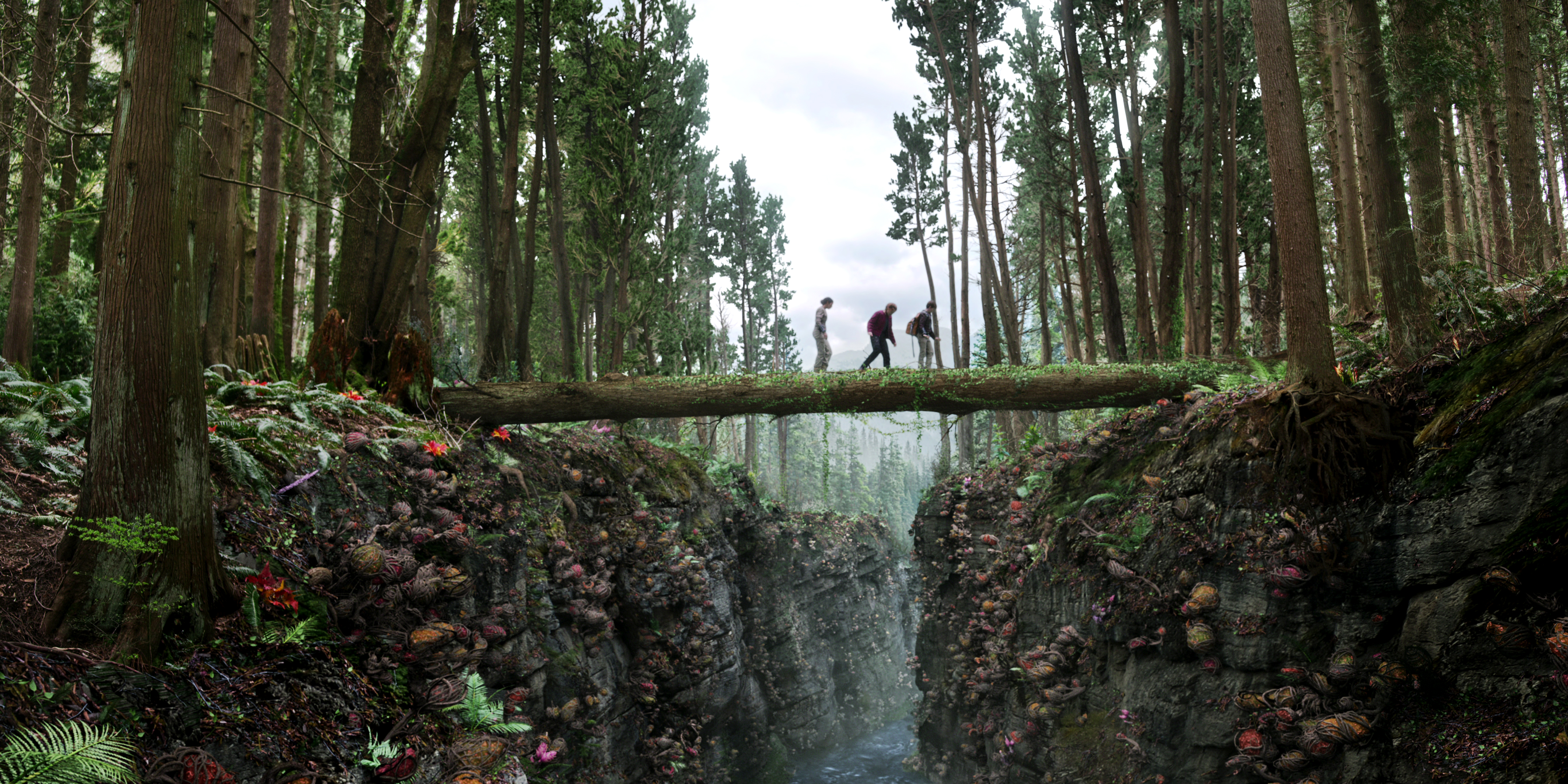
CM: What’s it like working on a television series as opposed to a film?
BC: A film is a review process. You do a temp mix, screen it and make adjustments gradually, refining the film. Television is a very tight note process. You don’t screen it for the public. You screen it for your producers, for the networks, for the studio, and maybe friends and family depending on the project. You get your notes. You might get feedback on how it plays after the show is released.
But a show on Netflix or Amazon — any kind of streaming show where they’re releasing them all at once — it’s a very different feedback process. Binge-watching, for the viewers, changes things a lot. It’s a different medium, and some projects will lend themselves to it and others won’t. We get to work on every episode in a bulk format, more like a film. We’re not up against a release date, so we could go back and change things in an episode, or update things that we’ve already done, based on something that comes up later. Shows definitely evolve differently. And there are no commercials or act breaks. It’s a different beast. We’re thinking of the show in its totality. Right now, binging is this popular way to view things, but it might swing back the other way, where episodes are only shown weekly, or every couple weeks, to keep the anticipation, like Game of Thrones.
CM: What were your challenges on Lost in Space?
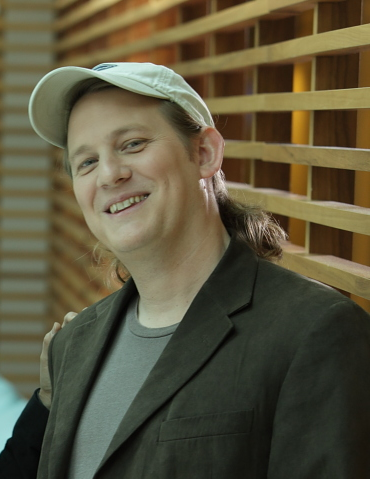
BC: There’s a lot of designing of individual elements, and then those are disseminated between the editors. Usually I like to work with a smaller crew of one or two. Because of the schedule, more editors were needed on this, and it’s harder to keep track of. There’s more wrangling. You want to keep everything consistent. All these elements, like the Rover and the Jupiter and the doors of the ship, you want them the same every time. You’re making sure everyone’s using the same built material.
But no two people will cut something the same way. And you want to keep their unique takes on things, and then rein them in to keep everything consistent. I pretty much cut the Robot the whole time. Nobody else cut the Robot stuff, because I wanted that to be very consistent. It had this servo-esque movement quality but I didn’t want it to sound like a servomotor. So we’re using different elements to create a mechanical sound with some weight to it.
CM: This is a darker, very serious take on an older franchise. It would have to be, to be relevant in 2018.
BC: I thought it would end up being much darker than it is. It’s still a very family-friendly show. The family’s figuring out the science. They each have their own skill set, and bring something to the table. And it’s a boy and his robot story. It remains pretty true to the heart of the original. It’s a family drama with a sci-fi twist. That was very intentional. The showrunner had that in mind the whole time. So a lot of it was reining in other directors and crew to his vision of the show, and crystallizing that as much as possible going along. Sometimes their ideas change too. It was a constantly evolving process, finding out what was working onset. For a season two, it will be a lot easier to keep that cohesive tone. Toby Stephens is fantastic; he’s one of my favorites, and Molly Parker too. Both of them give really good performances. The kids are all really strong. Mina Sundwall I think is going to be huge in the future. I think people are really going to like the Don Wilson character. He’s a bit of a rogue, a Han Solo type. I think they all did a really great job balancing the tone, keeping the drama and tension throughout without it being too dark.

CM: Did you use sound elements from the 1960s series at all?
BC: When they’re in the alien ship, there are a few three-dimensional holographic maps, and we used some 1960s sound elements to create new sounds. We also wanted the robot voice to sound similar [to the original], to have that flavor. Otherwise, we didn’t use old elements — but we wanted the technology to sound a little retro. The computers might be a little crackly, or make some noise, where you wouldn’t expect a computer to make noise these days. The design of the ship elements like the Rover in some ways is all a little retro. They’re all on these walkie-talkies that are ginormous. You might expect that they’d have a tiny communicator, an earpiece or a little button thing.
[Spoiler Alert:] I don’t know if Netflix wants me to reveal this, but if you’re a fan of the original series, there’s a cameo at the end of episode one. There’s a wounded man and Parker Posey steals his identity. I used him as the basis for the Robot on the planet. He did a pass of those lines for us, “Danger, Will Robinson!” There’s a lot of things that are really going to resonate with fans of the original show. I think people are going to love it.
* * *
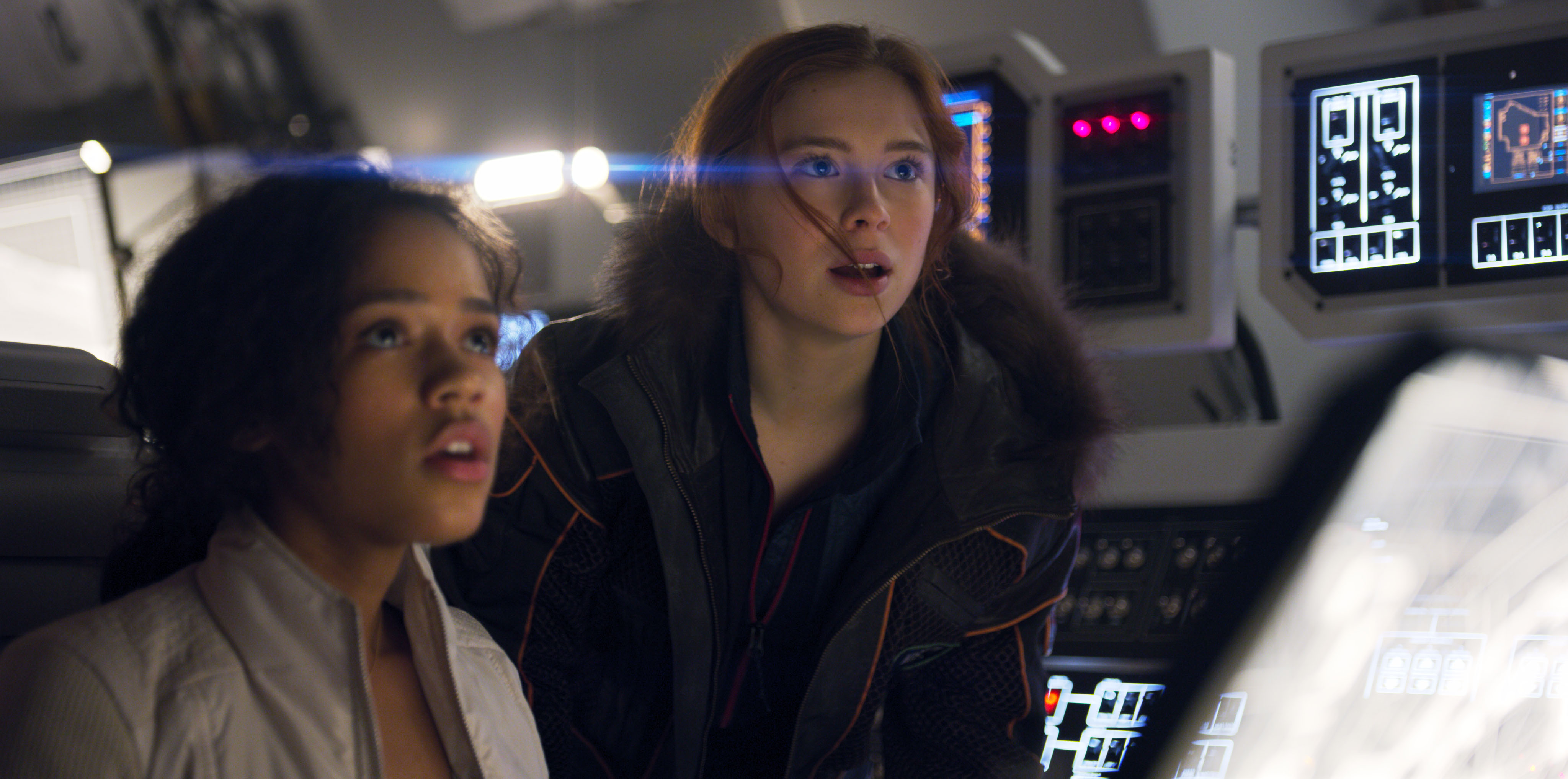
Although he was unable to participate in the interview, Spencer, Cook’s co-supervising sound editor on Lost in Space, provided the following comment at deadline:
“It was a pleasure to be a part of a classic story about the Robinson’s family that has been redesigned from the ground up by very talented filmmakers and storytellers. The ever-changing landscape allowed us endless opportunities creating and designing life outside our planet.”


